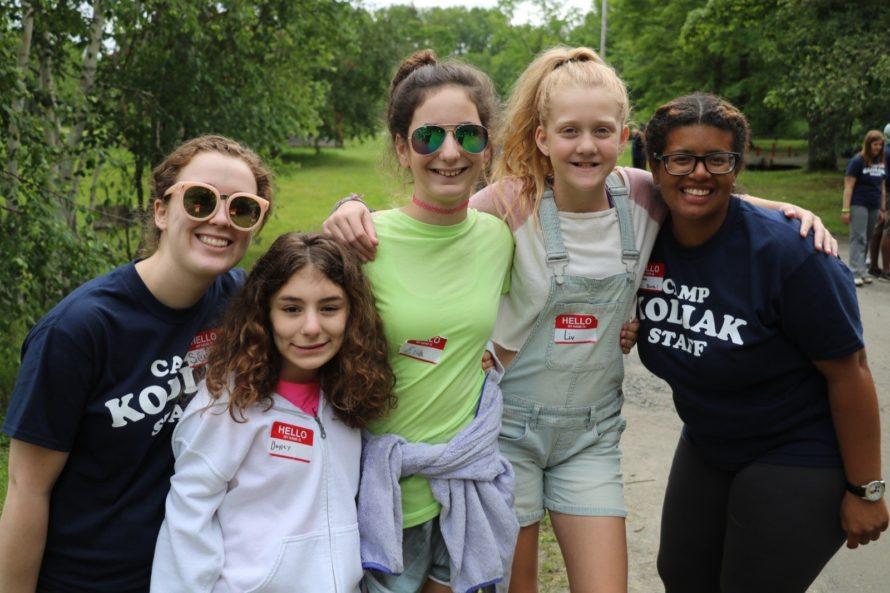In the 1970s, my father worked for a well-known Canadian summer camp. As campers registered, they were placed on a list by gender and age. When it came time to put cabin groups together, the director counted off the correct number of names, and they became a cabin. No thought was put into whether these campers had anything in common or where a camper would be more comfortable. Cabin groupings were organized similarly to school grades, with birthday (or at least birth year) as key.
If one of the main goals in sending a child to camp is—as our parents tell us—to make friends, then organizing cabins just by age and gender simply does not make sense, and my dad knew that when he started Camp Kodiak. There are so many variables that contribute to friendship-making, and age tends to be fairly low on the list. Much more important are factors such as interests, abilities, social skills, and introversion versus extroversion. Some 13-year-olds are very active, competitive, and athletic, while others are more shy, cautious, or cerebral. Just as a member of the computer club is seldom best friends with the captain of the volleyball team at school, these two children are unlikely to gravitate towards each other at camp. If we want to maximize a camper’s chances of making genuine friendships at camp, we need to give him a lot of opportunities to spend time with like-minded peers, which means putting them in the same cabin. At Camp Kodiak, we call this “social fit.” We build our cabins according to which campers we think would get along, have common interests, and have similar needs. Obviously, age plays a factor; 8-year-olds and 16-year-olds are not cabin-mates. However, most of our cabins have multiple ages in them—12-14 year-olds, or 16-18 year-olds—and there are usually multiple cabin groups of the same age.
We know that youngsters with learning disabilities, ADHD, and ASD have higher incidences of experiencing social difficulties than their typically-developing peers. One has only to look to their local Learning Disabilities Association to find social skills groups, or read the latest issue of ADDitude magazine to see articles about social skills and ADHD. And social skills deficits (e.g., in social communication, emotional reciprocity, and non-verbal communication) are part of the very criteria for diagnosing Autism Spectrum Disorder. Anecdotally, we hear stories from parents about difficulties their children have had with classmates, neighbours, siblings, or their cabin-mates at other camps. Many of them have been bullied or excluded, made to feel peripheral or unwelcome in existing cliques. Since our campers are at greater risk of isolation and friendlessness, trying an overnight camp (or another camp after a previous negative experience) feels scary, so it is paramount that we set them up for social success.
How do we take kids who have experienced social failure and give them the skills to make friends? It starts with social fit. We meet our campers beforehand (in the cases of international campers, we have to “meet” them virtually) to determine what the most appropriate social fit would be. Do we have any returning campers who seem similar to this new youngster? Do we have other kids around his age who like Pokémon/musical theatre/Minecraft/baseball? Would he do better with campers who are slightly younger or slightly older than his chronological age? Would he feel lost in a boisterous cabin or feel thwarted in a quiet group?
Once campers get to camp, counsellors use every opportunity to model and teach appropriate social skills. Sharing a cabin with eight other campers and three staff members is bound to create conflict. How that conflict is managed and resolved determines whether or not the experience helps build the social and problem solving skills of the people involved. We help campers see things from another person’s perspective, determine which of their actions might have caused another person’s reaction, and analyze which social errors or misunderstandings (their own or another person’s) might have caused a conflict. Because the groups are designed to be fairly homogeneous, the lessons can be tailored to the needs of the group, according to the problems that present themselves. And because these social skills lessons are immediate and in context, they are relevant and timely, and they tend to stick.
Not all of our campers have social skills difficulties; some are kids or adolescents just navigating the regular social ups and downs that come with growing up—managing disagreements with friends, dealing with competition, or avoiding gossip and rumour-spreading. These campers, too, benefit from social fit because they need peers who challenge them and are good candidates for true, reciprocal friendships.
Walking around Camp Kodiak at Free Play, you see a cross-section of social subtypes: there are those kids who are playing pick-up basketball or floor hockey, others who are sitting on the grass with a guitar and some friends, still more playing in a crowd at the Gaga Ball courts, and others playing Magic the Gathering at a picnic table. Not surprisingly, even though campers are not required to stay with their cabin group during Free Play, many of them do because their cabin-mates are the campers who are most likely to share their interests. In short, they have found a good social fit.
A few months ago, I met a mother who was interested in registering her daughter for Camp Kodiak. Her daughter was an experienced camper, having attended a mainstream camp with a sibling for years as part of an inclusion program. She always enjoyed that other camp, but as she got older it became clearer and clearer that she was a round peg trying to fit in a square hole. While other campers were generally kind to her, they didn’t seek her out for friendships. What struck this mother at our meeting was that for the first time her daughter would not be squeezed into a structure that simply didn’t fit; rather, she would be in a spot that was designed for her and for kids just like her according to their needs. And the best part was that her sibling could come along because we had a perfect social fit for her, too.

